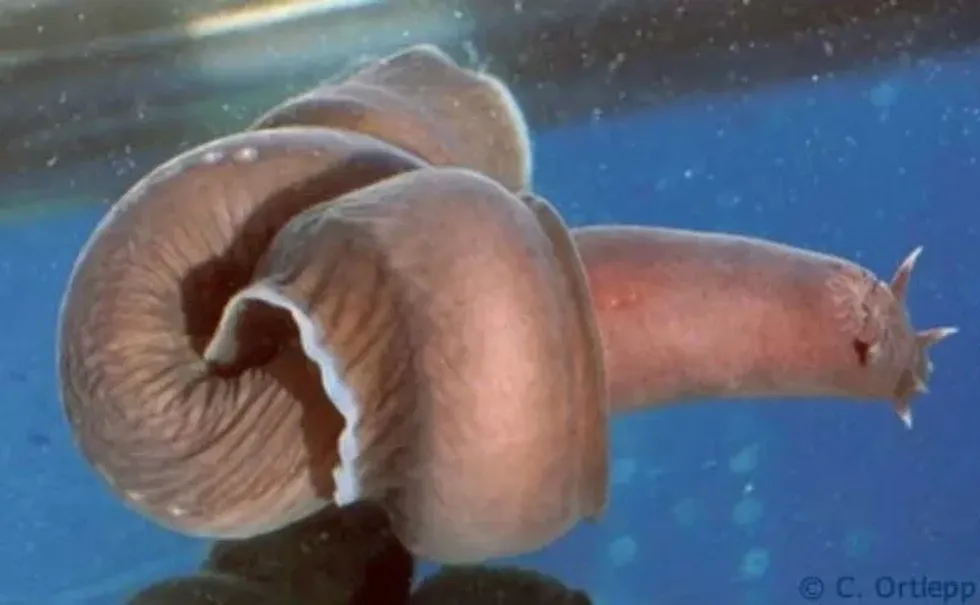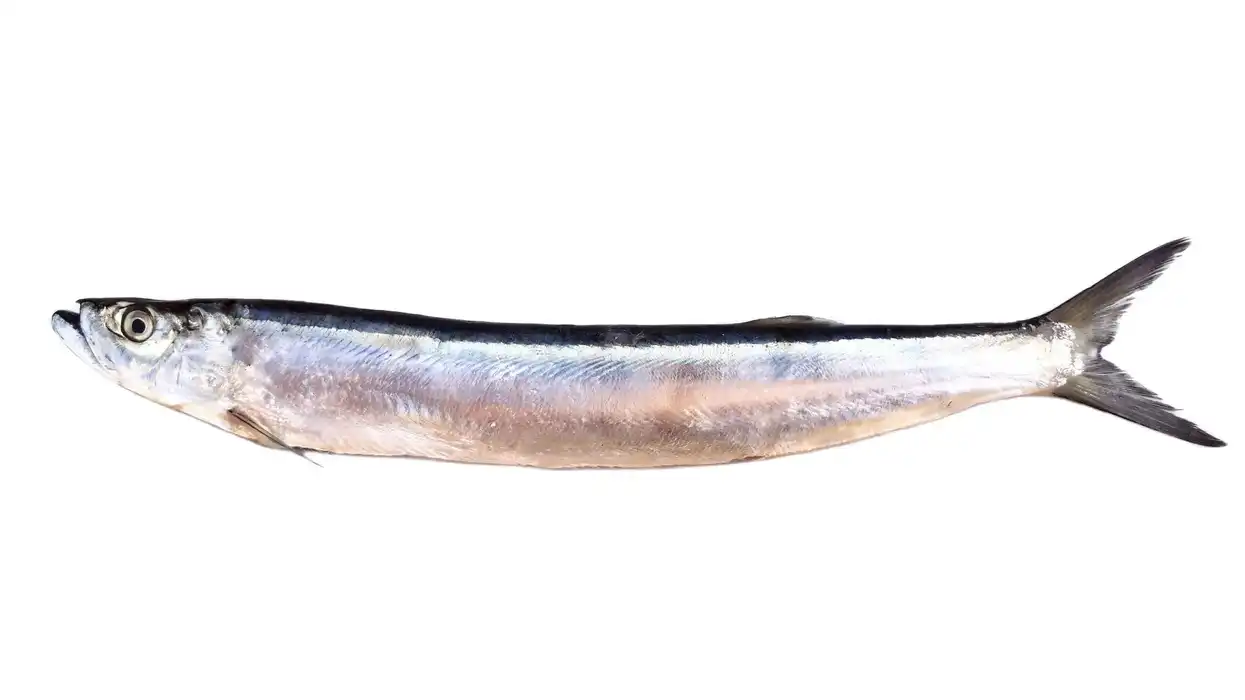If you're astonished by lampreys then you are bound to be surprised by these closely related animals, the hagfish. They are primitive fishes and are classified under the class Myxini.
Hagfish are useful animals as they consume dead and dying animals thereby cleaning the ocean. In return, they also serve as food for fish and seals.
These animals, found in all major seas like the Pacific Ocean, are known to prey on small fish and worms. The meat of the inshore hagfish is served as food for humans.
Though they are jawless animals, they have tooth-like cartilage structures. The color of the body of the hagfish differs from one species to another. These colors vary from gray to pink.
These animals are known to contain slime glands. Wherever the hagfish encounter any threat it is known to produce large amounts of slime from the glands via the pores on its skin.
An average-sized hagfish contains around 90-200 slime pores on its body. The slime that the hagfishes produce has application in the manufacture and preventive features of helmets and kevlar.
If you find our content interesting then do check out tetra and convict cichlid.
Hagfish Interesting Facts
What type of animal is Hagfish?
Hagfish are primitive fish that look like slime eels and order of Myxiniformes.
What class of animal Hagfish belongs to?
Hagfishes belong to the class of Myxini of the Animalia kingdom.
How many Hagfish are there in the world?
Owing to very limited data and information it is extremely difficult to have a count on how many hagfish there are in the world. However, as there are over 76 different species with the majority of them being marked as Least Concern it can be safely said that the number of hagfishes in the world is huge.
Where do Hagfish live?
The earth is home to numerous species of hagfish. It is estimated that there are more than 75 different species and varieties of hagfish that are found in all the oceans and the deep seafloor.
The geographical range of each species is different and varies from place to place.
The Pacific hagfish is found in the Pacific Ocean while the Atlantic hagfish is found in the Atlantic Ocean. Other important species of hagfishes include the Gulf hagfish which is found in the Gulf of Mexico and the Mediterranean Sea while the Broadgilled hagfish is found in New Zealand.
What is Hagfish's habitat?
These animals are usually found near the bottom of the ocean or close to the deep seafloor as these are the places that are the usual feeding ground of the hagfish. These marine animals like to feed on small invertebrates and carrion.
Though they live in burrows on the floor of the ocean their habitat can also be silt bottoms on the continental shelves where food is found in plenty for them.
However, mostly their habitat also depends on the species concerned. For example, a few species prefer muddy substrate via which they make burrows.
Who does Hagfish live with?
The social status of the hagfish is very interesting. Depending on their respective species, a few of the hagfish are solitary by nature while there are quite a few species that prefer living in large groups. However, it has often been observed that the majority of hagfishes are known to form large clusters or groups while they feed.
How long does Hagfish live?
Hagfish, also called slime eels, are animals that have a longer lifespan in comparison with other creatures. Out in the wild, these fish have a lifespan of almost 40 years. However, when they are kept in an enclosed environment like that of an aquarium, their lifespan decreases, and they live for almost 17 years.
How do they reproduce?
Information regarding the reproduction among these species of animals is extremely limited. This is largely due to the fact that there is a huge difference in the gender ratio of the hagfish.
It has been observed that there is only one male in comparison to 100 females. Many species of hagfish are known to be hermaphrodites.
These animals have both male and female sex organs. The female sex organs however remain inactive for a long time and get activated at a later phase in the lifecycle of the animals.
The females of these species lay eggs, the clutch size of these animals range from 20-30. Though hagfish are often compared to lampreys, however unlike lampreys, there is no larval stage for hagfishes.
What is their conservation status?
As there are over 75 different species of hagfishes that are present on our planet the conservation status of each is different from one another. There are few species like the Broadgilled Hagfish, Atlantic hagfish, Gulf hagfish (Eptatretus springeri) which have been classified as Least Concern by the Internation Union for Conservation of Nature or IUCN Red List.
Eight-gilled hagfish which are usually found in the coastal areas have been listed as Critically Endangered. It is mainly due to the destruction of the animal's shallow water habitat.
There are also few species that have been marked as Data Deficient owing to very limited data that has been recorded to date. These include the likes of the goliath hagfish and the Pacific hagfish.
An IUCN Report from 2011 stated that almost 12% of hagfishes are facing the risk of extinction due to the loss of their habitat by human activities and climate change.
Hagfish Fun Facts
What do Hagfish look like?

Hagfish are animals that are eel-like in shape. These animals are devoid of any scales and can also be termed as soft-skinned animals.
These animals are considered primitive vertebrates and they neither have bones nor any jaws. The round mouth is filled with horny teeth, while the skeleton is made up of cartilages. These animals have around up to 15 pairs of gills which are used for respiratory purposes, while the eyes that are located under the skin are not well developed.
They are unique animals as they are the only animals present on our planet which has a cranium but don't have a vertebrate column. As hagfishes are jawless fishes, they are often compared with lampreys.
How cute are they?
A hagfish is extremely hideous looking and cannot be considered cute in any aspect.
How do they communicate?
Hagfish, also called slime eels, use a wide range of techniques via which it communicates or finds its prey. These animals are highly developed in their senses and rely on the sense of touch and smell to find their food.
They also have numerous pairs of sense organs or barbels around their mouth which act as tentacles. They also have eyes that are covered by skin and thus their eyesight is greatly reduced.
Special organs, known as the Schreiner organs, serve the purpose of taste buds are also found on the outer layer of the skin of these animals. Thus it can be rightfully said that hagfishes rely on their sense organs for communicating and locating their food.
How big is a Hagfish?
The size of the hagfish ranges from 16-40 in (40-100 cm) in length. On average they are slightly longer than lampreys which have a range of 5-40 in (13-100 cm).
How fast can Hagfish swim?
There is very limited data about the speed at which the hagfishes swim. However, they are very fast swimmers and a swimming hagfish often looks like a snake or an eel fish.
How much does Hagfish weigh?
The weight of the hagfish is roughly around 0.75 lb (750g).
What are the male Hagfish and female Hagfish called?
There is no distinctive name that is given to male and female hagfishes. At a later phase in their life, hagfishes become hermaphrodites.
What would you call a baby Hagfish?
There is no distinct name that has been ascribed to a baby hagfish.
What do they eat?
Primarily these jawless animals are scavengers by nature. These feeding habits of these animals included dead animals like worms and fishes.
Apart from dead and decaying vertebrates, these animals also prey on living creatures whom they consume from the inside out. These animals are also known to bury itself on the seafloor where it consumes dead decaying matter via its skin and gills as they have no jaws.
Are they dangerous?
Hagfish pose no potential harm to humans and neither do they have any tendency to bite humans. However, they produce slime which proves fatal to smaller marine animals.
Would they make a good pet?
No. They won't make a good pet as they are wild marine animals and they should be kept in their natural habitat.
Did you know...
These animals can survive for months without eating any food as they have a slow metabolic rate.
How many hearts does a hagfish have?
The hagfish is a very unique animal that has four hearts. Since this species is considered to be a primitive animal, their body functions, such as the entire circulatory system, are of a primitive type. Out of the four hearts, one serves the main pumping action while the others serve accessory purposes.
Where do the Hagfish originate from?
Since these are primitive creatures, tracking the origin is extremely hard. However, it is estimated that hagfish appeared on earth 300 million years ago.
Here at Kidadl, we have carefully created lots of interesting family-friendly animal facts for everyone to discover! Learn more about some other fish including parrotfish and catfish.
You can even occupy yourself at home by drawing one of our hagfish coloring pages.










